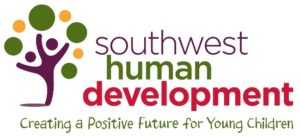Family Literacy Plus 2009-2012
Family literacy encompasses a unique educational approach that includes four separate but integrated components.

1) Parents receive adult education, often focusing on improving job skills or English language skills. 2) Children receive individualized education that is appropriate for their age and developmental level. 3) Parents take part in classes that help them understand their children’s literacy development in order to learn ways to support that development at home. 4) One of the most unique elements of a family literacy program is Parent and Child Together (PACT) time, a regularly scheduled session when parents and children play and learn together through interactive literacy activities.
Family Literacy Plus also provides quarterly family literacy nights:
Each of the literacy nights will feature food, fun, literacy-related activities designed to engage parents and children, and distribution of the following items:
- Literacy Night One – a children’s book
- Literacy Night Two – a children’s backpack to be used to carry books to and from the classroom library
- Literacy Night Three – another book
- Literacy Night four – a literacy blanket. Blankets such as these have proven successful in providing families with a dedicated place in their home for reading and family time.
- In addition, an event kick-off will also include a free book distribution
These events are designed to link literacy with fun, motivate children to read, and engage families and community members in demonstrating to children the importance of reading. Examples of activities include distributing the books, reading with children, modeling reading aloud for parents who do not have this skill, and using arts and crafts activities focusing on literacy themes. Junior League of Phoenix volunteers were involved in all of these activities.
Need for the Program
National profiles of adults who are illiterate indicate they are most likely to be between the ages of 20-39, high school drop outs, unemployed or seasonally employed, limited or non-English speakers, and low-income. Low literacy in adults is highly correlated with reading problems in their children, making family literacy programs critical for children’s success in school.
The Family Literacy Plus project directly addresses the Junior League focused impact by increasing parental involvement in educational opportunities for themselves and their children, and by improving the quality and quantity of reading with parents at home.
Program Goals
The program goal is to prepare children for successful school entry. Objectives include increasing parental involvement in educational opportunities for themselves and their children, improving family literacy, and improving the quality and quantity of reading with parents at home.
Family Literacy Plus will be measured through the number of attendees (approximately 80 children and 100-125 adults on each of the four nights).
Family Literacy Plus is intended to augment the Family Literacy Project with is already evaluated using the following methods:
- Pre and Post Assessments determine participant entrance and exit English language proficiency levels;
- Family Portfolios capture adult participant educational progress, document the level of parent and child interactions, and parent involvement throughout their participation in the project;
- Home-School Activity Logs document the level of at-home parent involvement and children’s level of reinforced education on the at-home activity subjects;
- Teacher and Parent Surveys and Interviews provide a full picture of children’s social, emotional, cognitive and physical development and demonstrate parents’ skills as observers of their children’s development;
- Training Attendance Logs determine the participation level in parent training; Behavioral Observation Checklists demonstrate parents’ skills as observers of their children’s development;
- Parent Volunteer Logs document the time and the activities involved in observing and assisting in the children’s classroom;
- Attendance Logs document participation in school activities and programs, such as parent meetings, school sponsored functions, parent-teacher conferences, along with the number of community organizations presenting at Parent Meetings and the number of participants;
- Number of and Utilization of Books in the Home demonstrates the development of home library areas.
Pre- and post-tests from the Family Literacy Project show that the families are spending more time reading with their children by the end of the school year.
Measurable Outcomes
Increasing parental involvement in educational opportunities for themselves and their children:
- Increase of parent volunteer hours by an additional 10 hours per participant family
- Maintain an 85-90% family participation rate
Improving the quality and quantity of reading with parents at home, increasing frequency to 2-3 times per week:
- A pre-post self assessment/ report of home reading habits at home



